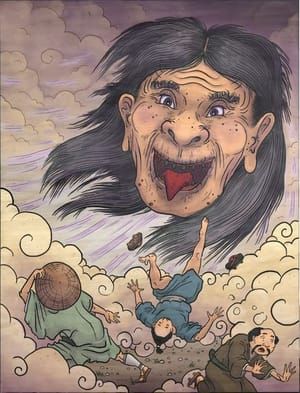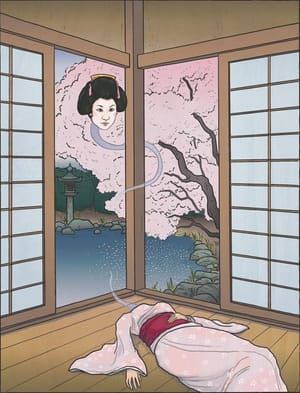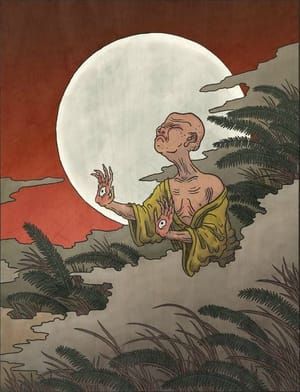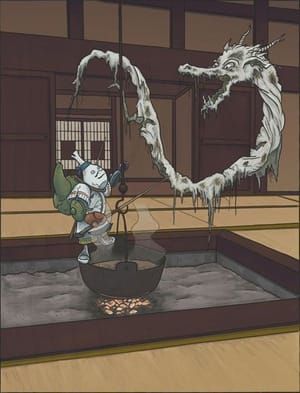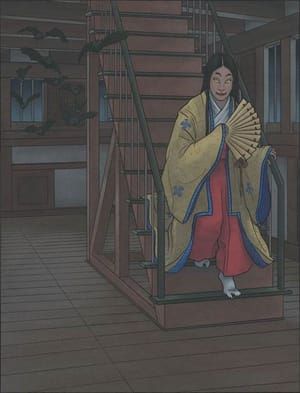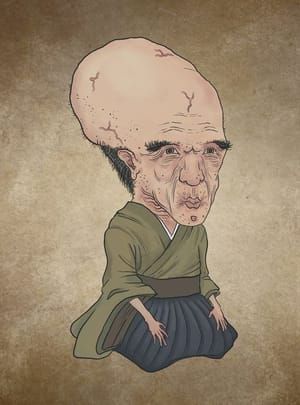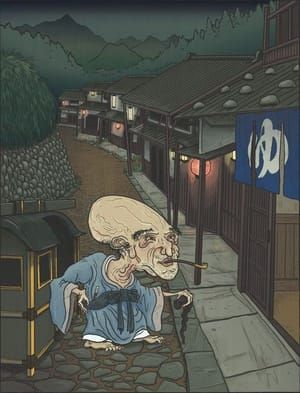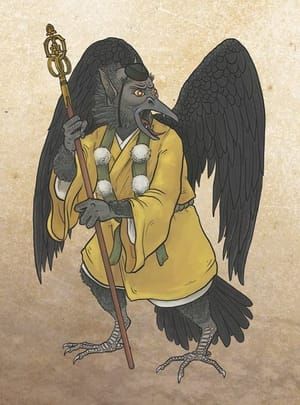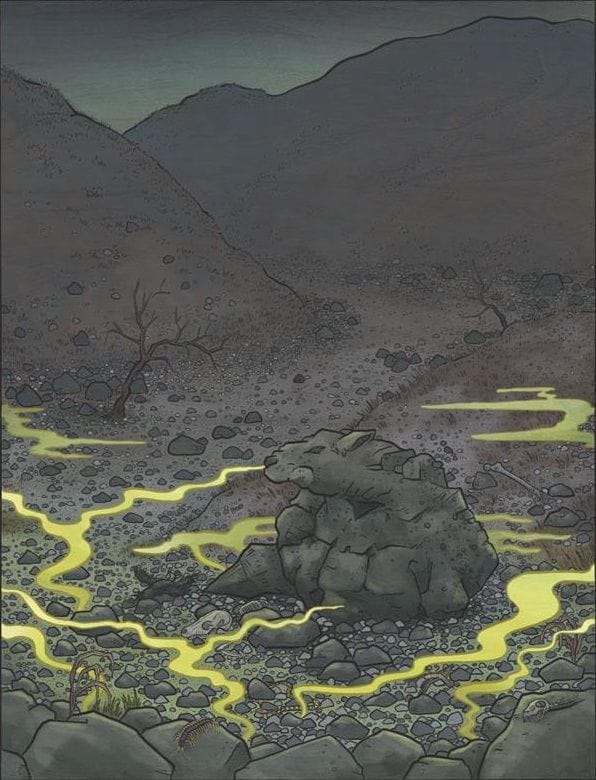

Sesshō Seki, 2015
Matthew Meyer
殺生石
Sesshō seki is a large boulder that stands in the plains of Nasuno, Shimotsuke (modern day Tochigi Prefecture). Around it is a desolate, lifeless field, filled with toxic gasses and the skeletons of animals who strayed too near.
Sesshō seki was formed when the evil nine-tailed kitsune Tamamo no Mae was slain. Her hunters returned triumphantly, bearing her body to the capital. Her spirit, however, attached itself to a large boulder near where she fell. It continued to kill long after her death. Any living thing that wandered close enough to the stone died instantly. Sesshō seki remained a deadly landmark until 1385 CE, when Tamamo no Mae’s spirit was put to rest once and for all.
One day, a high priest named Gennō was traveling through Shimotsuke Province when he noticed a peculiar sight—the birds in the air fell to their deaths whenever they passed over a certain boulder in the plain of Nasuno. At the base of the stone was a pile of dead birds. Gennō wondered what could cause such a phenomenon. Not long afterwards, a local woman appeared near the priest, and he asked her about the stone.
The woman explained that Sesshō seki was haunted by the spirit of Tamamo no Mae. She told him the story of the fox courtesan, and then vanished. Gennō realized that the woman had been the ghost of the infamous kitsune. He performed a Buddhist memorial service over the stone, and suddenly Tamamo no Mae’s spirit reappeared and confessed all of her sins, going back thousands of years all the way to India and China. After hearing Gennō’s pure words and Buddhist teachings, Tamamo no Mae repented all of her evils and swore never again to do wrong, and then disappeared. Her spirit, exorcised from the rock, never harmed anyone again.
Gennō—whose name means hammer—hit the rock and it burst into many pieces. The pieces flew all across Japan, where many of them remain today. The base of the rock still stands in Nasu, Tochigi. Other chunks flew to Okayama, Niigata, Hiroshima, and Ōita where they were enshrined. Smaller fragments landed in present-day Fukui, Gifu, Nagano, Gunma, and parts of Shikoku, where they were picked up and used as magical amulets to perform charms or curses.
Matthew Meyer
artistArthur
Wait what?
